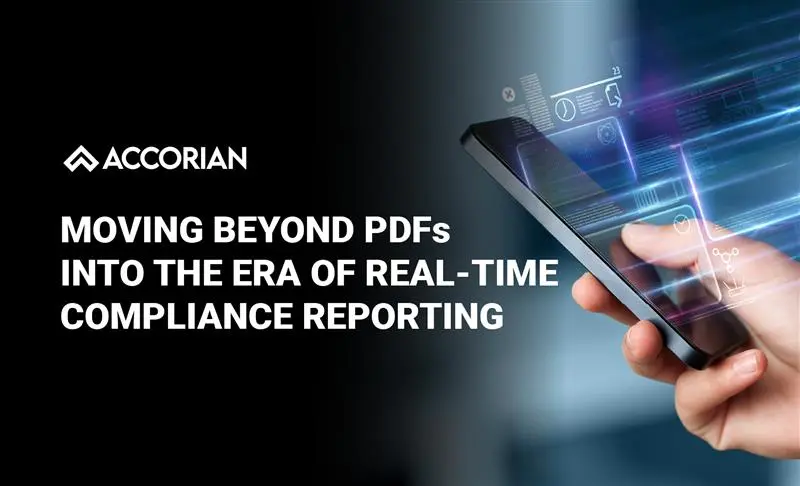The cybersecurity landscape is evolving at an unprecedented speed. With regulatory requirements constantly shifting, organizations must adhere to frameworks such as ISO 27001, SOC 2, NIST, HITRUST®, and HIPAA, making it increasingly challenging to stay compliant.
Traditional, technology-limited compliance processes and manual workarounds are no longer sufficient. Static reports, whether in PDFs or spreadsheets, become outdated almost as soon as they are created, a challenge that has persisted for decades.
This growing complexity underscores the need for more advanced compliance solutions, leading to the adoption of real-time dashboards that provide up-to-date, actionable insights.
Limitations of Static Reports
Static compliance reports in PDF or spreadsheet formats come with inherent limitations. They require significant time and effort to create and are susceptible to errors. Countless hours are spent gathering logs and test-control results, leaving limited time for thorough review and increasing the potential for inaccuracies. Moreover, these static reports lack drill-down capabilities and interactivity, making in-depth analysis both tedious and inefficient.
Rise of Real-Time Compliance Dashboards
Legacy reporting in PDFs or spreadsheets is not dynamic or visible enough to meet current compliance requirements. With increasing sophistication in compliance and audits becoming more frequent, real-time visibility into compliance health is essential.
For instance, Accorian’s own GoRICO Compliance Dashboard provides real-time compliance metrics through dynamic visuals such as counters, progress charts, and SLA compliance graphs. It highlights key indicators like the number of open, overdue, and under-review tasks, the ratio of manual to automated evidence, and task ownership trends using interactive, color-coded markers. With features such as real-time compliance scoring and detailed completion breakdowns, GoRICO enables teams to instantly identify bottlenecks and take prompt action — transforming static reports into a live, actionable view of compliance.
Features of Real-Time Dashboards
Compliance real-time dashboards are intelligent applications that make data actionable. They provide best-in-class compliance and visibility management. Features include:
- Live Data Integration – Dashboards present real-time visualizations by seamlessly aggregating data from multiple tools, ensuring metrics are continuously updated for accuracy and relevance.
- Dynamic Visualizations – Dynamic features like counters, charts, progress rings, and SLA graphs are employed within real-time dashboards to convey compliance health briefly. For instance, in GoRICO, users can instantly view open, overdue, and under-review tasks briefly, along with progress toward control implementation and testing.
- Color-Coded Indicators and Compliance Scores – Color-coded threat levels enable swift prioritization—red indicating overdue tasks and green denoting completion. For instance, GoRICO’s dashboard features a real-time compliance score, allowing users to monitor alignment with standards such as ISO 27001 or SOC 2.
- SLA and Task Monitoring – With just a few clicks, teams can assess SLA adherence across controls, review task status by owner, and pinpoint bottlenecks in real time. Dashboards like GoRICO’s enable them to see high-priority items and ensure that tasks are finished before compliance deadlines are missed.
- Alerting and Notifications – Many dashboards include integrated alerting systems in which the compliance tool may issue automatic email alerts or dashboard notifications when a critical control/task is overdue or a new non-compliance is identified, to help teams act quickly.
- Historical Tracking and Audit Trails – Real-time dashboards track the history of past logs, which allows organizations to track trends, analyze trends over time, and generate audit evidence instantly.
Benefits of Automated Dashboards
Transitioning to dashboard-based reporting has numerous benefits compared to static PDFs:
- Time and Cost Savings: Automated dashboards streamline the reporting process, significantly reducing the time and effort required for compilation. Many organizations have reported cutting their report preparation time by up to 50% through the adoption of real-time dashboards.
- Enhanced Accuracy: Dashboards help minimize human errors and omissions by removing the need for manual data entry. In one case study, a financial services company reported a 30% improvement in data accuracy after transitioning to an automated dashboard.
- Continuous Monitoring: Live dashboards enable teams to identify and address gaps proactively, preventing them from escalating into major issues.
- Audit Readiness: Since the dashboard is updated in real-time, organizations are always audit-ready.
Key Practices for Implementation
Adopting real-time compliance dashboards, such as GoRICO’s, requires thoughtful planning to ensure they provide meaningful insights and support effective decision-making. Some of the essential practices to adopt are outlined below:
- Define Clear Objectives – Clearly define the dashboard’s objectives from the outset to ensure it delivers precise, measurable value.
- Select Meaningful and Measurable Metrics – Select KPIs that map to compliance requirements like ISO 27001 or SOC 2.
- Ensure Data Integrity – Integrate reliable data sources and perform validation checks to make sure the dashboard displays the actual status.
- Design for Clarity and Usability – Design your dashboard with consistent visuals, clear labeling, and intuitive drill-down features to enable seamless, unambiguous data navigation.
The future of cybersecurity compliance reporting is real-time and digital. PDFs and spreadsheets can no longer keep pace with today’s rapidly evolving threats and regulatory requirements.Automation will drive efficient and accurate compliance, turning static data into actionable intelligence that accelerates reporting and enhances risk management.
Automated reporting keeps organizations audit-ready and streamlined, with less paperwork and stronger security controls. GoRICO enables this transition by integrating with existing tools and delivering dashboards that track compliance across ISO, SOC, NIST, HITRUST®, and other standards. Adopting real-time compliance reporting today is the key to meeting tomorrow’s regulatory demands effectively and with confidence.



